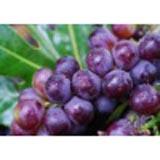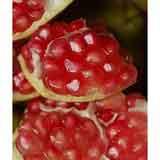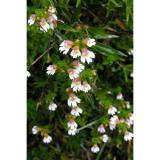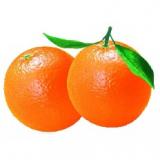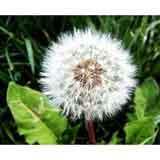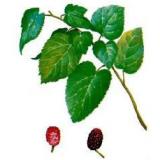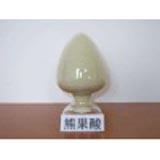Latin Name(Aloe vera L.var.chinensis Berger)
Active Ingredient(Aloin Barbaloin Isobarbaloin aloin)
Aloe Vera L. Extract
Scientific Names: Aloe vera L.
Forms: Dried leaf latex; dry extract of aloe latex; leaf acemannan hydrogel; aloe gel.
Traditional Usage:
     - Anal fissures (latex) - Antibacterial (gel) - Anti-diarrheal (latex) - Antifungal (gel) - Antinflammatory (gel and latex) - Antimicrobial (gel and latex) - Antiretroviral (gel) - Antiviral (gel) - Burns (gel) - Cankers (acemannan hydrogel) - Cellular Regeneration (gel and latex) - Cleansing (gel and latex) - Constipation (latex) - Detoxifying (gel and latex) - Hemorrhoids (latex) - HIV (acemannan hydrogel) - Hyperglycemia (gel) - Laxative (latex) - Pre and Post Operative Cleansing (latex) - Psoriasis (gel) - Skin Wounds and Sores (gel) - Ulcers (gel)
Overview:
     The leaf gel of aloe, Aloe ferox MILLER and Aloe barbadensis MILLER (otherwise known as Aloe vera) [Fam. Aloaceae], has been used to soothe burns and heal wounds since ancient times, dating back at least 4000 years. In the New Testament (John 19:39) reference is made to an ointment made of myrrh and aloe to embalm the body of Jesus. Aloe was a secret beauty aid of Egyptian queens including Cleopatra and Nefertiti and was considered a "plant of immortality" in ancient Egypt. Soothing Aloe vera gel comes from the central part of the leaves while bitter laxative latex comes from cells closer to the leaf rind. In addition, a polysaccharide called acemannan from aloe leaf rind has been found to impair the ability of viruses, including retroviruses like HIV, to infect healthy T-cells. Traditional uses of aloe include for treating hives, insect stings and bites, rashes, sunburn, swelling and skin wrinkles. In a clinical trial to test the effect of Aloe vera gel and mild soap versus mild soap alone in preventing skin reactions in patients undergoing radiation therapy, a protective effect of adding aloe to the soap regimen was observed. Aloe vera was first valued as a trade commodity around the world for its laxative properties. The bitter latex is rich in anthraquinones including aloe-emodin and chrysophanol and is an effective laxative for acute constipation, although it is not recommended for chronic constipation due to its potentially lethal effects in high dosages. The German pharmacopoeia recommends aloe for treating acute constipation, for emptying the bowels before X-rays, before and after abdominal operations and for all disorders in which defecation with a soft stool is desired, e.g. anal fissures, hemorrhoids and after rectal operations. Human clinical trials also prove aloe effective for treating psoriasis, cankers and lowering blood sugar.
Â
Active Ingredients: Â
     Aloe dried latex contains: Approximately 13-27% aloins A and B (barbaloin, aloin, and glucosyl diastereoisomers of aloe-emodin anthrone). Aside from aloinosides A and B, other hydroxyanthracene derivatives are also present. 5-hydroxyaloin is characteristic of Cape aloes while 7- hydroxyaloin is found in Barbados aloe; small amounts of anthraquinones including aloe-emodin and chrysophanol. Chromone derivatives including 25-40% aloeresins A and B and smaller amounts C. Aloenin B (aloenin A and p-coumaroyl-glucose); p-coumaric acid methyl ester also occurs. Aloe gel contains: water; polysaccharides including acemannan; fatty acids including gamma linolenic acid; prostaglandins; salicylic acid; saponins; sterols; vitamins E and C; minerals including zinc; 20 amino acids (out of 22 required by the human body); and lectins.Â
Â
References:
    Â
Choi SW, Son BW, Son YS, Park YI, Lee SK, Chung MH. 2001. The wound-healing effect of a glycoprotein fraction isolated from aloe vera. Br J Dermatol. 2001 Oct; 145(4): 535-45. Ishii Y, Takino Y, Toyo'oka T, Tanizawa H. 1998. Studies of aloe. VI. Cathartic effect of isobarbaloin. Biol Pharm Bull. 1998 Nov; 21(11): 1226-7. McCaleb, RS, Leigh, E, Morien, K. 2000. Aloe in The Encyclopedia of Popular Herbs. Publ. by Prima Publishing, 3000 Lava Ridge Court, Roseville, CA 95661. Pp. 41-52. Olsen DL, Raub W Jr, Bradley C, Johnson M, Macias JL, Love V, Markoe A. 2001. The effect of aloe vera gel/mild soap versus mild soap alone in preventing skin reactions in patients undergoing radiation therapy. Oncol Nurs Forum. 2001 Apr; 28(3): 543-7. Wichtl M (ed). 1994. Aloe barbadensis/capensis - Barbados/Cape Aloe (English translation by Norman Grainger Bisset). In Herbal Drugs and Phytopharmaceuticals. CRC Press, Stuttgart, pp. 59-62.

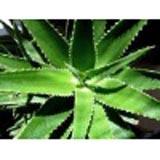


 By certification
By certification 
